A Close Look at the Vibrant Yellow Feathers of Yellow Cockatiel
Dive into the world of Yellow Cockatiel as we explore the science and aesthetics behind their vibrant yellow plumage. Enjoy Reading!
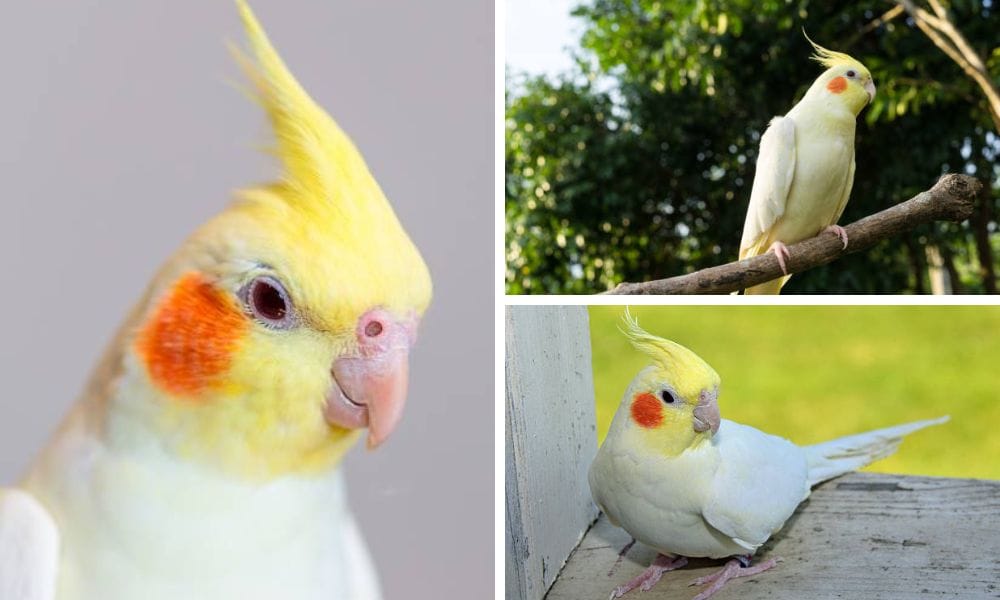
Key Takeaways:
The yellow cockatiel, a standout in the aviculture world, is a sight to behold with its bright yellow feathers and charming personality. Among cockatiels, the lutino cockatiel is recognized as one of the most popular mutations, admired for its distinctive appearance and widespread appeal. This beautiful pet bird, a member of the cockatoo family, has captured the hearts of bird enthusiasts around the globe. In this article, we’ll dive into the fascinating world of the yellow cockatiel, exploring everything from its color mutations to its care requirements.
The Yellow Cockatiel: An Introduction
The yellow cockatiel, also known as the lutino cockatiel, is one of the most popular mutations of the cockatiel species, Nymphicus hollandicus. Originating from the second cockatiel mutation, these birds are prized for their striking appearance, which includes a yellow head, bright orange cheek patches, and a yellowish tint to their white plumage, often described as light yellow feathers—a key trait that sets them apart from the wild-type grey. Lutino cockatiels are also known for their friendly and curious personalities, making them favorites among bird enthusiasts.
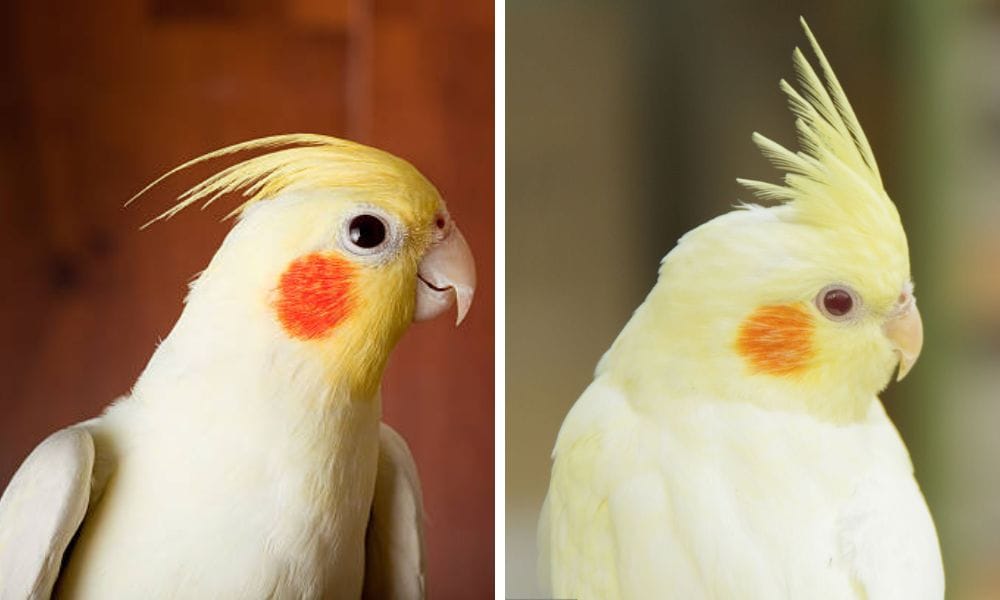
Understanding Color Mutations
Understanding Color Mutations
Color mutations in cockatiels, including the lutino gene and other genes responsible for color mutations, have led to a variety of stunning visual traits. The lutino cockatiel is one such example, with its white to light yellow body and red eyes. Other mutations, such as the pied cockatiel, cinnamon cockatiel, pearl pied, and white face pearl, contribute to the diverse palette seen in these birds. The pearl mutation is characterized by white speckles on the back and wings, while some mutations, like white face and white face pearl, lack yellow or orange pigmentation, resulting in distinctive markings and appearances. Identifying certain color mutations in cockatiels can sometimes be a problem for breeders and owners, due to subtle differences between types.
Normal Grey Cockatiels: The Classic Standard
Normal Grey Cockatiels are the timeless icons of the cockatiel world, instantly recognizable by their primarily grey plumage and striking white flashes along the outer edges of their wings. These birds are the original, or wild type, form of cockatiel, and their classic appearance has made them a favorite among bird lovers for many years. Male Normal Grey Cockatiels are especially eye-catching, sporting a bright yellow face that contrasts beautifully with their grey body, while females tend to have a more subdued, pale yellow face and softer overall coloring.
Highly social and interactive, Normal Grey Cockatiels thrive on regular attention and companionship, making them an excellent choice for both new and experienced bird owners. Their friendly nature and adaptability mean they quickly become happy members of the family, often forming strong bonds with their owners. Caring for a Normal Grey Cockatiel is straightforward, as they are hardy birds that do well on a balanced diet of pellets, seeds, and fresh vegetables. With proper care, these charming birds can live for many years, bringing joy, entertainment, and a touch of classic beauty to any home.
Male and Female Cockatiels: Spotting the Difference
Identifying male lutino cockatiels from female pearl cockatiel can be a challenge, as both sexes exhibit the gorgeous lutino cockatiel plumage. It is important to rely on fact rather than assumptions when identifying the gender of cockatiels, as visual cues alone can sometimes be misleading.
However, male cockatiels typically have brighter yellow feathers and more prominent white flashes on their tail feathers, while females may have a lighter grey or more subdued hue.
The Lutino Gene and Its Impact
The lutino gene is responsible for the absence of melanin, which results in the yellow and white coloration of these birds. This gene helps form the distinctive appearance of the lutino cockatiel by shaping not only the body feathers but also the facial feathers covering the area around the beak and eyes, giving the lutino cockatiel its distinctive yellow face and bright orange cheeks.
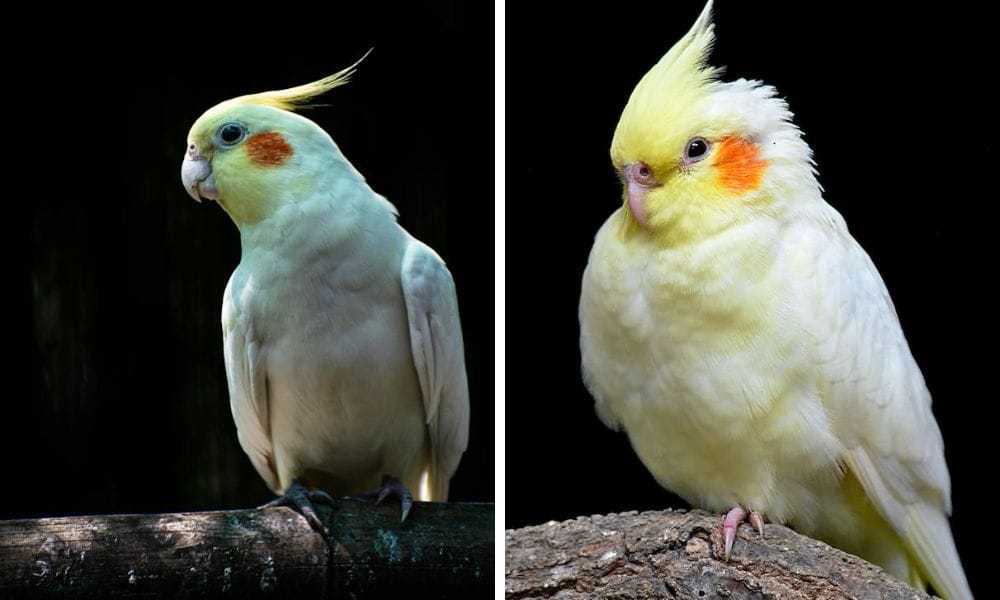
Pied and White Face Cockatiels: Contrasting Color Varieties
Pied and White Face cockatiels are two captivating color varieties that truly showcase the diversity found within cockatiel plumage. Pied cockatiels are instantly recognizable by their patchwork of grey, yellow, and white feathers, creating a one-of-a-kind appearance with bold patches and irregular patterns. This mutation, the first to be established in the United States, remains a favorite among bird breeders and pet owners alike for its cheerful, unpredictable look.
In contrast, the White Face cockatiel stands out with its strikingly clean, solid white head and face, completely lacking the yellow and orange pigmentation seen in other varieties. The absence of these colors gives the White Face a crisp, elegant appearance, often complemented by subtle grey or white body feathers. Despite their differences, both pied cockatiels and White Face cockatiels share a friendly disposition and thrive in a well-equipped aviary.
To keep these birds happy and healthy, it’s important to provide a balanced diet that includes fresh foods like kale, broccoli, and carrots, alongside their regular seed or pellet mix. Always ensure a clean food bowl and fresh water are available. Enrich their environment with plenty of toys and perches. A mirror can also serve as an interactive toy, providing environmental stimulation and entertainment for cockatiels. You’ll enjoy the bright personalities and unique beauty these color mutations bring to your home.
Cinnamon and Fallow Cockatiels: Warmth and Subtlety in Plumage
Cinnamon and Fallow cockatiels bring a gentle warmth and understated elegance to the world of cockatiel color mutations. Cinnamon cockatiels are known for their soft, light brown or pale yellow body color, which gives them a warm, inviting appearance. Their feathers often have a muted, almost velvety quality that sets them apart from the more common grey varieties.
Fallow cockatiels, on the other hand, display a delicate dusty brown coloration with a subtle yellowish tone, and are easily identified by their deep red eyes—a trait that adds to their unique charm. Both cinnamon and fallow cockatiels are celebrated for their gentle nature, making them ideal companions for bird lovers seeking a calm and affectionate pet.
Male cockatiels, especially in these varieties, are often quick learners and can be trained to mimic household sounds, from the beep of a microwave to the catchy notes of a television theme song. With patience and positive reinforcement, these birds can learn to whistle, sing, and even perform simple tricks, making them delightful additions to any home. Their ability to learn and interact, combined with their beautiful appearance, ensures that cinnamon and fallow cockatiels remain beloved choices among bird enthusiasts.
Silver and Dominant Silver Cockatiels: The Allure of Cool Tones
Silver and Dominant Silver cockatiels are prized for their cool, sophisticated tones that add a touch of elegance to any aviary. The classic Silver cockatiel features a pale silvery-gray body, accented by white wing stripes and delicate spots on the flight feathers, creating a shimmering effect as they move. Dominant Silver cockatiels, meanwhile, are distinguished by a deeper gray body and a striking “skull cap” marking on the head, making them stand out among other color mutations.
These unique colorations are the result of specific genetic mutations, and both varieties are highly sought after by bird breeders and collectors. Whether you have a single-factor or double-factor Dominant Silver, their refined appearance and gentle demeanor make them a joy to observe and care for.
Bonding with Silver cockatiels is a rewarding experience. Spend time near their aviary, engage in gentle talking, singing, or whistling, and offer a variety of toys—especially those made from soft woods or paper—to encourage natural foraging and play. With the right attention and care, these cool-toned beauties will quickly become cherished members of your feathered family.
Habitat and Care for Your Yellow Cockatiel
Providing the right habitat for your yellow cockatiel is crucial. A spacious bird cage with room for long tails and wings to stretch is essential. Additionally, incorporating a nest box can offer a sense of security and a place for rest. To create a comfortable and engaging environment for your cockatiel, consider adding perches, safe plants, and a consistent routine that fosters trust.
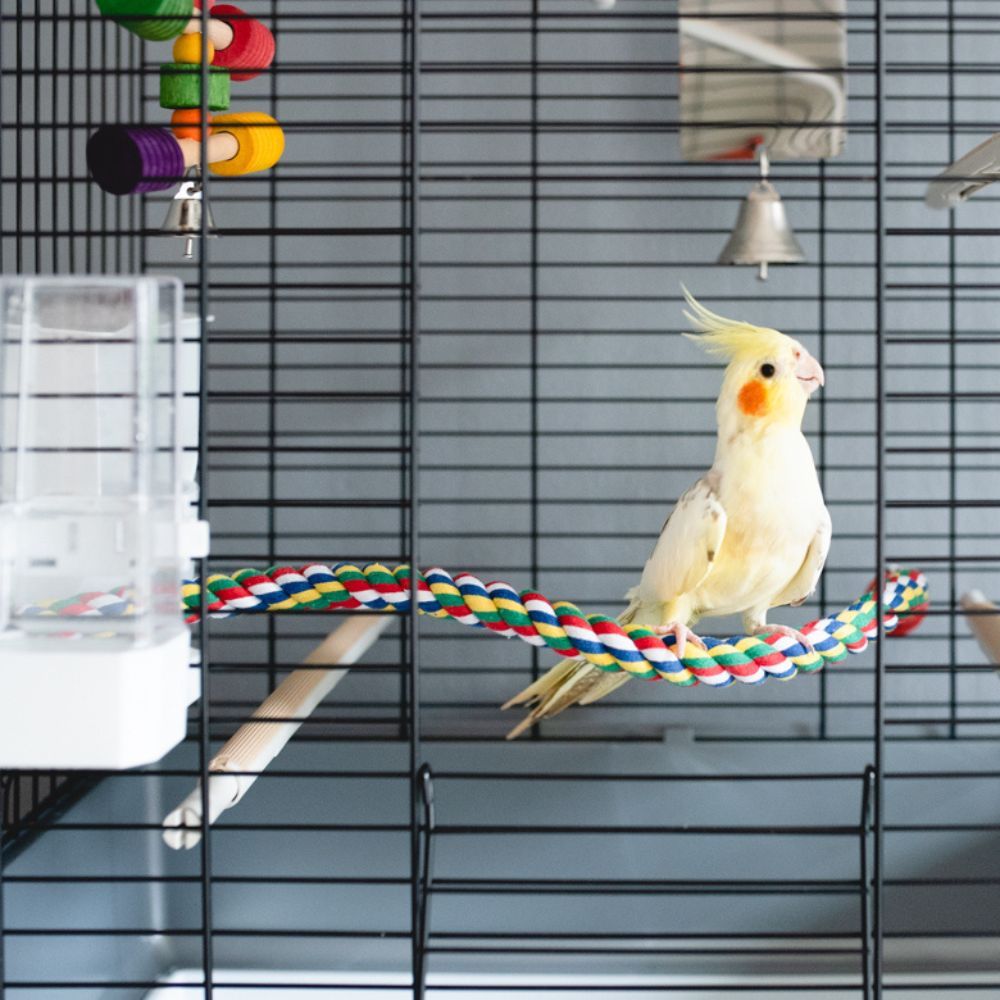
Diet and Nutrition: What to Feed Your Cockatiel
A balanced diet is key to maintaining the vibrant plumage of yellow cockatiels. A mix of seeds, pellets, and fresh fruits and vegetables will ensure that your pet bird receives all the necessary nutrients for a healthy life.
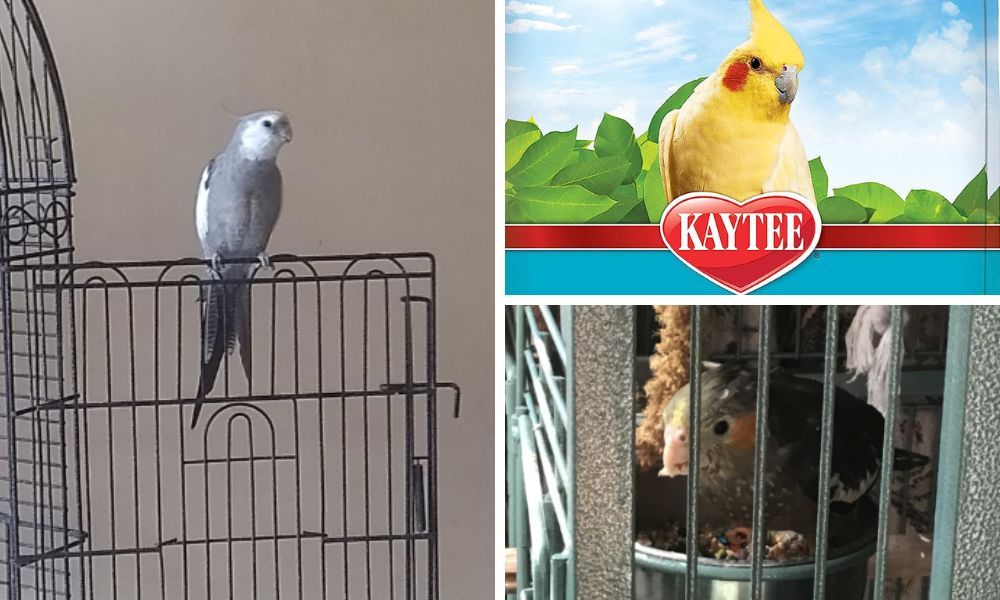
Choosing the Right Cockatiel: A Guide for Prospective Owners
Selecting the perfect cockatiel for your home is an exciting journey, especially with so many beautiful color mutations to choose from. Prospective owners should start by considering the bird’s age, health, and temperament, as these factors play a big role in how well your new feathered friend will adapt to your household. Lutino cockatiels, with their bright yellow feathers and vivid orange cheek patches, are a popular choice for those drawn to bold colors, but it’s important to note that some mutations, like lutino, may be more prone to certain health issues compared to the hardy Normal Grey or Pied cockatiels.
Exploring other color mutations, such as the elegant pearl cockatiel with its delicate white speckles, or the warm-toned cinnamon cockatiel, can help you find a bird that matches your preferences and lifestyle. Pied cockatiels, known for their unique patchwork of colors, are another favorite among bird enthusiasts. No matter which mutation you choose, always do your research and connect with reputable breeders who prioritize the health and well-being of their birds. By taking the time to learn about the different types and their care needs, you’ll be well on your way to welcoming a happy and healthy cockatiel into your family.
Bonding with Your Cockatiel: Building Trust and Affection
Building a strong bond with your cockatiel is one of the most rewarding aspects of bird ownership. Trust and affection develop over time, so it’s important to approach your feathered friend with patience and consistency. Start by spending time near your cockatiel’s aviary, talking softly, singing, or whistling to help them become comfortable with your presence. Offering treats like millet spray through the bars can encourage positive interactions and help your cockatiel associate you with good experiences.
Avoid sudden movements and give your cockatiel plenty of time to adjust to new surroundings. As your bird becomes more confident, you can introduce toys and interactive play to stimulate their mind and keep them entertained. A clean food bowl filled with a variety of fresh foods, along with fresh water, is essential for their health and happiness.
By providing attentive care and a nurturing environment, you’ll foster a deep, trusting relationship with your cockatiel. Over time, your bird will likely enjoy spending time with you, learning new sounds, and even showing affection in return—making every moment together truly special.
Training Your Cockatiel: Tips for Success
Training your cockatiel is a rewarding experience that strengthens the bond between you and your bird. Male cockatiels, in particular, are known for their impressive ability to learn and mimic a variety of sounds, from household noises to catchy theme songs. To set your cockatiel up for success, establish a consistent routine and provide a stimulating environment filled with toys, perches, and activities that encourage exploration and learning.
Positive reinforcement is key—use treats like millet or sunflower seeds to reward good behavior and motivate your bird to try new things. Make sure your cockatiel’s aviary is spacious and always keep the food bowl clean and filled with nutritious options. Patience is essential, as every bird learns at its own pace, but with time and gentle encouragement, your cockatiel will begin to pick up new sounds and tricks. Training not only keeps your bird mentally engaged but also creates many years of enjoyment and companionship for both of you.
The Social Life of Yellow Cockatiels
Yellow cockatiels are social creatures that thrive on interaction. Whether it’s with other birds or their human companions, these pet birds love to engage and talk—cockatiels are known for their ability to mimic sounds and words. Sound plays a key role in their communication and social interaction, as they use vocalizations to express themselves and connect with others.
The Unique Charm of the Orange Cheek Patch
The orange cheek patch is a distinctive feature that sets the cockatiel apart from other members of the parrot family. In a male cockatiel, this vibrant splash of color is not just a visual delight but also a marker of health and vitality. The cheek patch, coupled with the primarily grey body and the contrasting yellow head, creates a striking appearance that bird enthusiasts adore. The intensity of the orange can vary among individuals, often more vivid in males, adding to the allure of these charming birds.
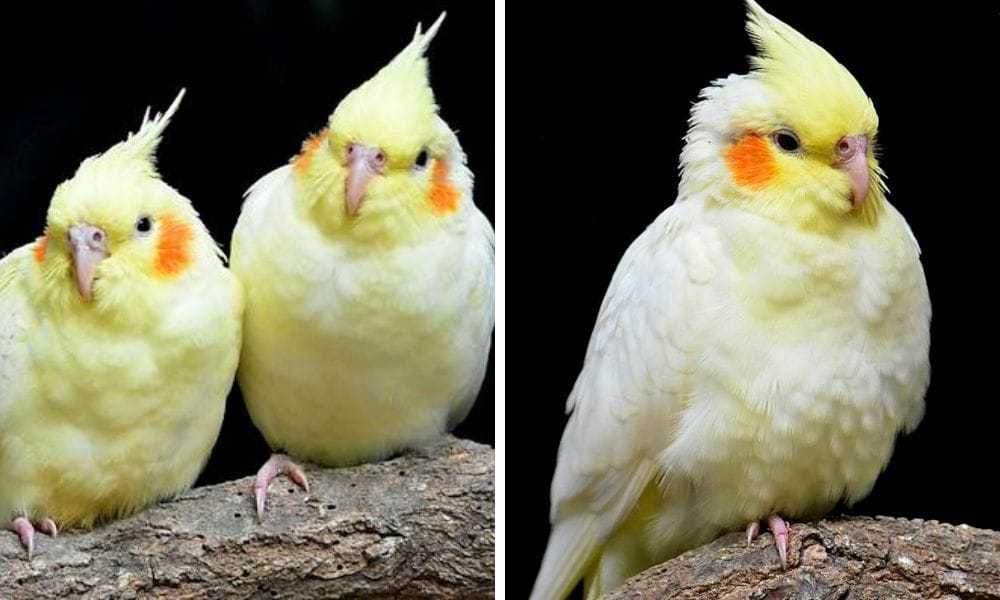
While the male cockatiel flaunts his orange cheek patch with pride, it's interesting to note that this feature is not just for show. It plays a significant role in courtship and communication within the flock. The brighter and more pronounced the patch, the more likely it is to catch the eye of a potential mate. This splash of color is a testament to the intricate ways in which nature adorns creatures for survival and social interaction, making the cockatiel's plumage a fascinating subject for both ornithologists and pet owners alike.
The Mystique of Blue in Cockatiel's Plumage
Cockatiels are primarily known for their vibrant yellow and grey feathers, but the allure of blue in a cockatiel’s plumage is something that captivates many enthusiasts. While true blue feathers are not naturally occurring in cockatiels due to their genetic makeup, blue mutations do not exist in cockatiels. Certain breeding practices have attempted to introduce a blueish hue through hybridization with other species. This has led to a fascinating exploration within the avian community, as breeders and geneticists work to understand the complexities of avian coloration.
The quest for blue in a cockatiel’s plumage is not just about aesthetics; it’s a scientific challenge that pushes the boundaries of what we know about genetics. The blue color in birds is typically caused by structural coloration rather than pigment, which means it’s the result of how light interacts with the feathers. While this color has not been achieved in purebred cockatiels, the fascination persists, and the blue hue remains a sort of ‘holy grail’ for cockatiel breeders around the world.
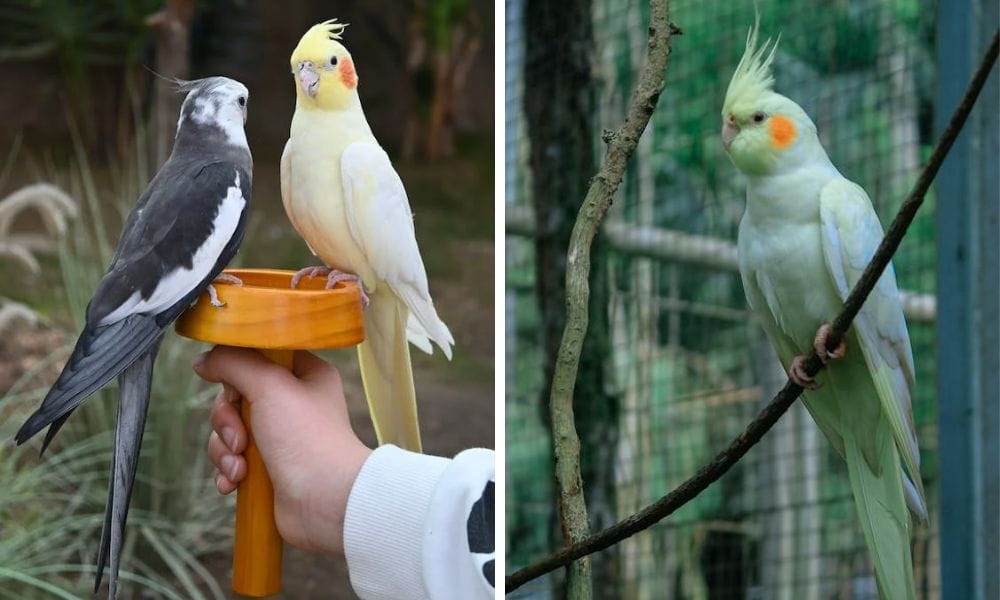
The Significance of Wing Patterns in Cockatiels
Wing patterns in cockatiels are not only a key identifier for species but also play a significant role in communication and behavior. The intricate patterns found on a cockatiel's wings can range from bold stripes to subtle spots, each serving a purpose in the wild. For instance, these patterns can be used for camouflage, to deter predators, or to attract mates during the breeding season. In captivity, wing patterns are often admired for their beauty and are a point of pride for cockatiel owners.
In the world of aviculture, wing patterns are also an important aspect of cockatiel shows and competitions. Breeders pay close attention to the symmetry and clarity of these patterns when selecting birds for breeding. A cockatiel with well-defined and symmetrical wing patterns is often considered more desirable. As such, understanding and appreciating the intricacies of wing patterns is not only interesting from a biological standpoint but also essential for those involved in the breeding and showing of these charming birds.
The Subtle Beauty of the Light Grey Plumage
Cockatiels are often recognized by their light grey plumage, which elegantly adorns the outer edges of their wings and tail. This subtle yet sophisticated coloration provides a beautiful contrast to the more vivid hues found on their crest and face. The light grey feathers are particularly prominent in males, who typically exhibit a more uniform grey coloration compared to their female counterparts. This difference in shading not only adds depth to the cockatiel's overall appearance but also serves as a visual cue for gender identification.
In the wild, the light grey plumage of the cockatiel plays a crucial role in their survival. It offers excellent camouflage against the bark and foliage of their native Australian habitats, allowing them to blend seamlessly into their surroundings. This natural adaptation helps protect them from predators while also aiding in their foraging activities. For the pet owner, understanding the significance of this coloration can deepen the appreciation for the natural beauty and evolutionary sophistication of their feathered companion.
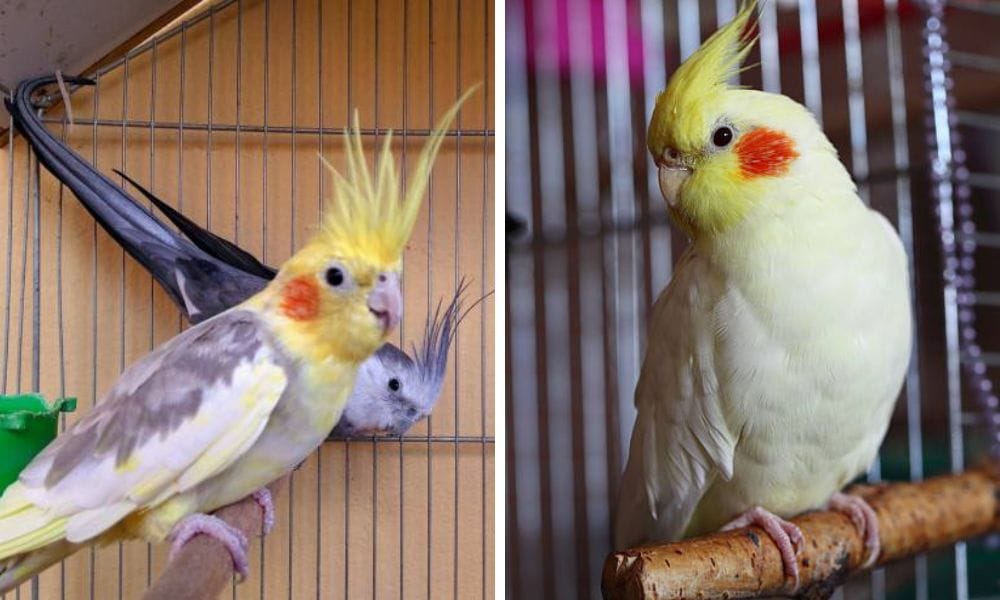
Breeding Yellow Cockatiels: What to Expect
Breeding yellow cockatiels can be a rewarding experience. When breeding, the egg plays a crucial role, as the coloration and traits of the chicks can often be observed as they hatch, with certain mutations visible from the moment they emerge.
Understanding the genetics behind the lutino pearl and other color mutations can help breeders anticipate the outcome of mating pairs, including identifying a lutino male, which is significant for determining split status and planning future breeding programs.
Health Concerns and Lifespan
Like other parrots, yellow cockatiels can live for many years with proper care. Being aware of common health concerns and providing regular veterinary check-ups can help ensure a long and healthy life for your cockatiel.
The History of Yellow Cockatiels in Aviculture
The yellow cockatiel has a rich history in aviculture, with pioneers like Cliff Barringer contributing to the popularity of this breed. The Florida Parrot Jungle is one such place where these birds were first showcased to the public.
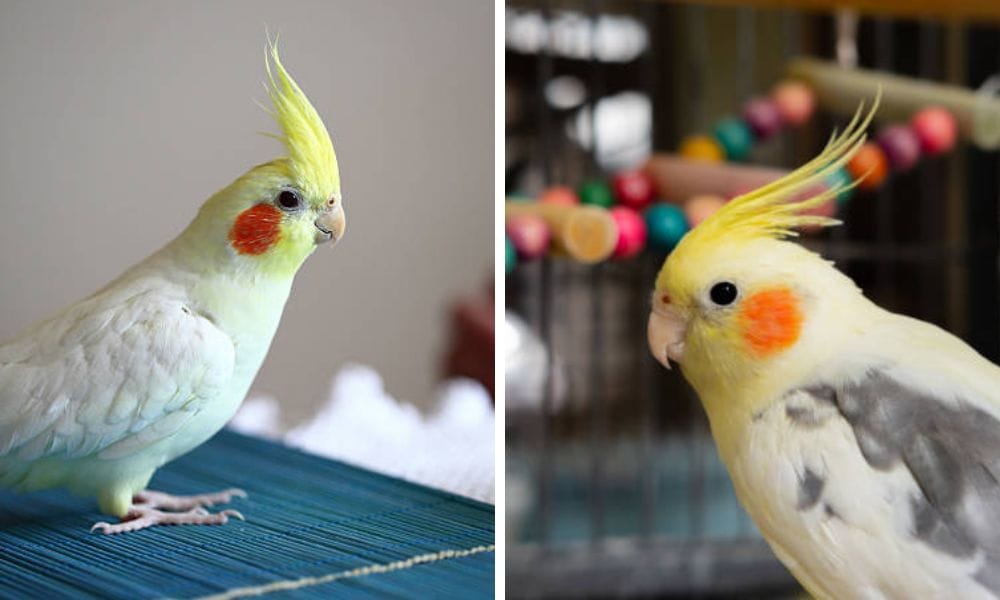
The Role of Genetics in Feather Coloration
Genetics play a significant role in the coloration of cockatiel feathers. The lutino pied, for example, is a result of specific genetic combinations that lead to its unique pattern and color.
The Wild Type vs. Color Mutations
While the normal grey cockatiel represents the wild type, color mutations have introduced a spectrum of colors to the cockatiel's plumage. From the bright yellow feathers of the lutino to the white and light yellow of the albino, these variations add to the cockatiel's appeal.
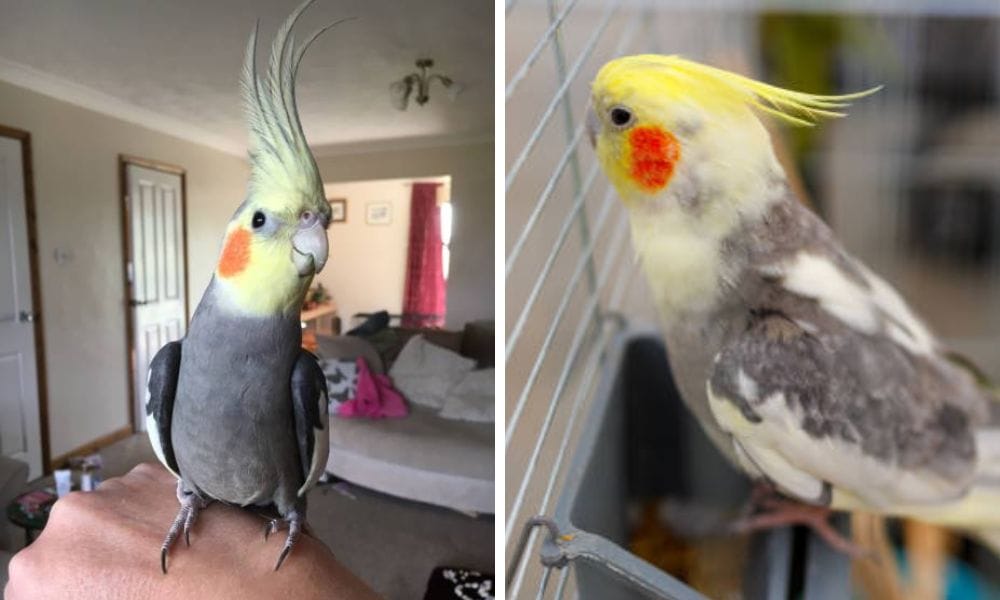
The Significance of the Yellow Crest
The yellow crest is one of the most distinctive features of the yellow cockatiel. This feature, along with the orange cheeks and red eyes, sets it apart from other birds in the animal world.
Yellow Cockatiels in Popular Culture
Yellow cockatiels have made their mark in popular culture, often depicted in media and art due to their striking appearance and friendly nature.
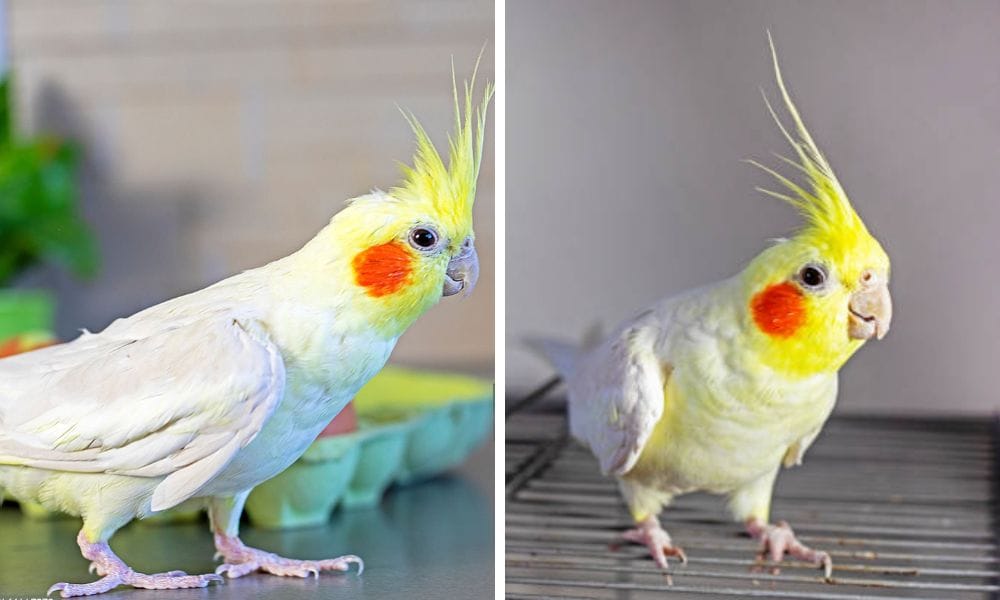
The Future of Yellow Cockatiels in Aviculture
As breeders continue to explore color mutations, the future of yellow cockatiels in aviculture looks bright. With ongoing interest and care, these birds will remain a beloved part of the pet bird community.
Responsible Cockatiel Ownership: Ethics and Best Practices
Being a responsible cockatiel owner means more than just providing food and shelter—it’s about creating a safe, healthy, and enriching environment for your feathered friend. This starts with a balanced diet, a clean and spacious aviary, and plenty of opportunities for social interaction and mental stimulation. Understanding the specific needs of different color mutations, such as the lutino cockatiel or pied cockatiel, is also important, as some may require extra attention to certain health or care aspects.
Regularly monitoring your bird for signs of illness, such as changes in behavior or feather condition, and seeking prompt veterinary care when needed, are essential parts of responsible ownership. Educate yourself about common health issues, and always strive to provide the best possible care. By being an informed and attentive owner, you’ll help ensure your cockatiel enjoys a happy, healthy life and remains a cherished member of your family for years to come.
Cockatiel Conservation: Protecting Wild and Captive Populations
Conservation efforts are vital to safeguarding both wild and captive cockatiel populations for future generations. In their native Australian habitats, cockatiels are admired for their bright yellow and grey feathers, but habitat loss and environmental changes have put pressure on wild populations. Supporting conservation initiatives that protect natural habitats and promote sustainable practices is crucial for the continued survival of these birds in the wild.
In captivity, responsible breeding and ownership play a key role in cockatiel conservation. Choosing birds from reputable breeders who prioritize health and genetic diversity helps maintain strong, vibrant populations. Avoiding birds from mills or unethical sources ensures that your feathered friend has been raised in a caring environment. By staying informed and making ethical choices, bird lovers can help cockatiels continue to thrive—both in the wild and as beloved companions in our homes.
Summary
The yellow cockatiel, with its vibrant yellow feathers and endearing personality, is a treasured member of the aviculture community. Understanding the genetics behind their coloration, providing proper care, and appreciating their social nature are key to enjoying these beautiful pet birds. As we continue to learn and breed these fascinating creatures, their future in the homes of bird lovers is assured.
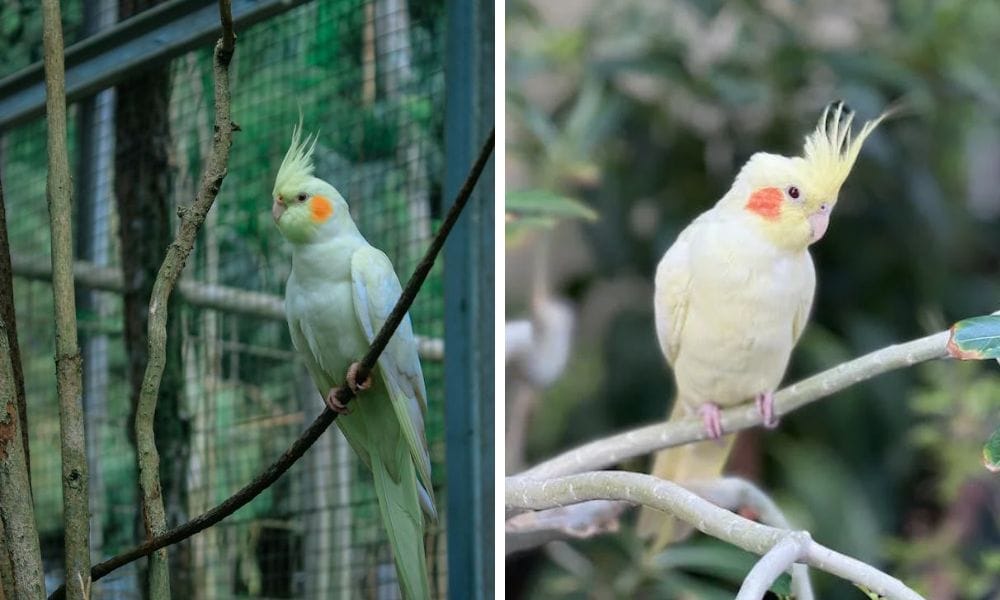
FAQ Section
Q: How can I tell the difference between male and female yellow cockatiels? A: Male lutino cockatiels often have brighter yellow feathers and more prominent white flashes on their tail feathers, while females may exhibit a lighter grey or more subdued hue.
Q: What is the lutino gene, and how does it affect cockatiel plumage? A: The lutino gene is responsible for the absence of melanin, leading to the yellow and white coloration of the lutino cockatiel, including the yellow face and bright orange cheeks.
Q: How long do yellow cockatiels live, and what are their common health concerns? A: With proper care, yellow cockatiels can live for many years. Common health concerns include nutritional deficiencies, respiratory issues, and feather plucking. Regular veterinary check-ups are recommended to maintain their health.

